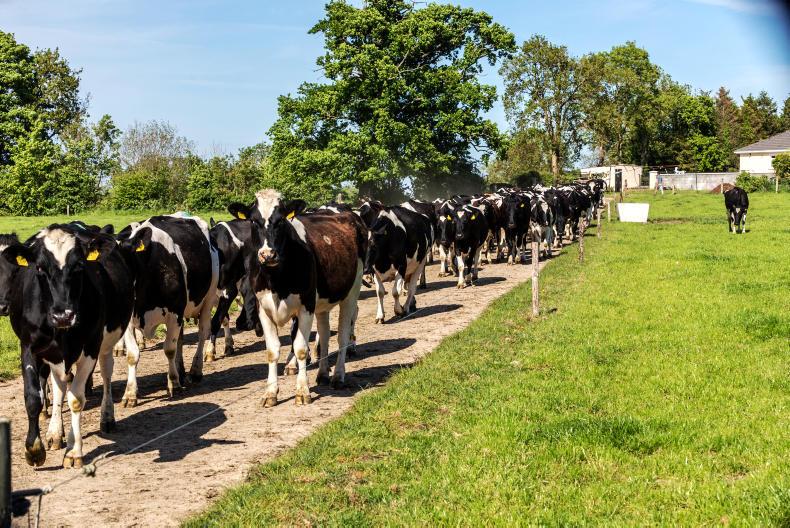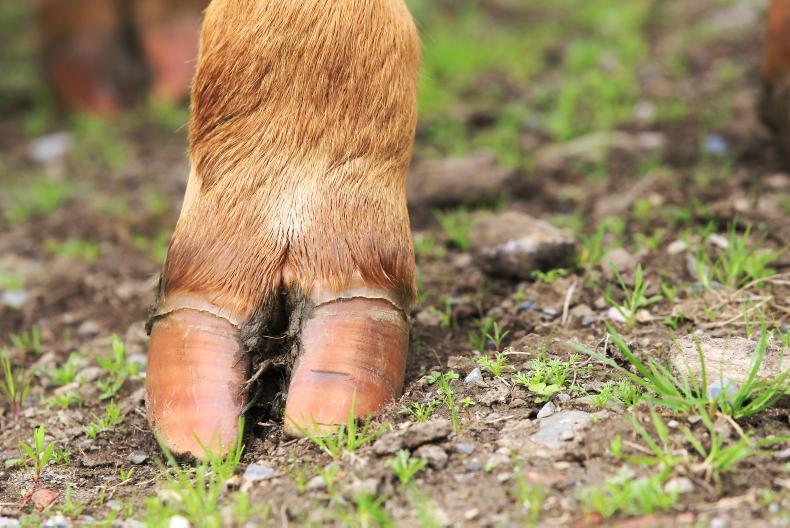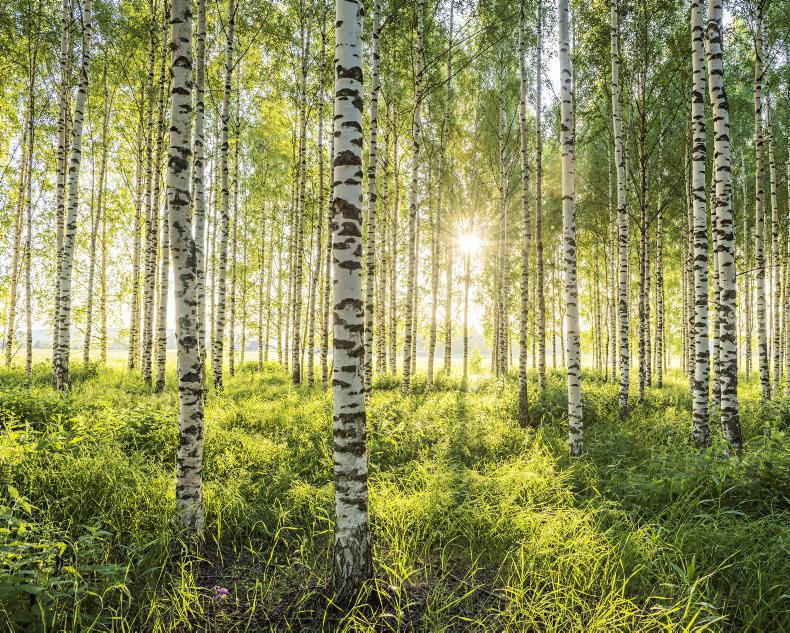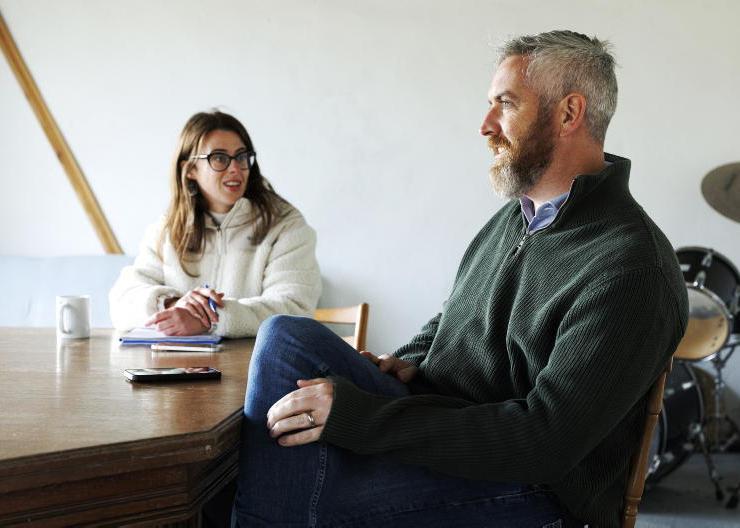There are several new criteria that farmers availing of a nitrates derogation in 2020 and 2021 have to abide by.
The recent dry spell has led to farmers reintroducing concentrates and revisiting concentrate requirements. Our Q&A of the new criteria published earlier in the year has detailed information on all of these aspects.
Q: Regarding the required reduction in the crude protein content in concentrates fed to grazing livestock, what level of reduction is required and what are the timelines?
A: Livestock with a 100% grass forage diet during the main grazing season (1 April to 15 September) will be required to abide by the following:
A maximum of 16% CP between 1 April and 15 September in 2020.A maximum of 15% CP between 1 April and 15 September in 2021.Note: If higher levels of crude protein are required, this needs to be certified by the appropriate adviser. Appropriate concentrate records are also required to be submitted by 31 March in the following year and this is the case for farmers using blended mixes or straights.
Q: Derogation farmers must undertake grass measurements and record them through appropriate software technology. How will these measurements be verified, how many must be taken annually and must I complete training?
A: Measurements will be verified based on the dates of record entry. It is the responsibility of the derogation farmer to complete grass measurement and recording of grass data.
If the required skills are not in place to complete this, then derogation farmers must undertake training in grassland management, which must be completed by the end of 2021. Proof of attendance is required for verification.
A minimum of 20 grass measurements is required per annum (falling plate meter or cut and weigh) on the main grazing platform only. Eyeballing grass is not a sufficient measurement.
The following measurements are required per month over the season: at least one in February, two in March, 14 in the period April to September, two in October and one in November.
Q: The review states commonage/rough grazing will not be eligible for the derogation allowance of 250kg livestock manure N/ha. How will DAFM define commonage/rough grazing for the purpose of the nitrates derogation?
A: This will be defined based on the declaration of commonage/rough grazing on the Basic Payment Scheme application. Commonage/rough grazing is eligible for inclusion in the whole farm stocking rate (WFSR) to 170kg livestock manure N/ha.
However, please note the following rules for commonage/rough grazing from 2020 for derogation farms:
Derogation farmer is permitted for inclusion to =170kg livestock manure N/ha.Chemical allowance permitted to =170kg livestock manure N/ha or WFSR stocking rate allowance, whichever is less.No further chemical allowance is permitted for commonage/rough grazing above a WFSR of 170kg livestock manure N/ha.Q: What are the requirements of the new liming programme?
A: The liming programme must be implemented in 2020 and based on a current nutrient management plan (NMP) and associated soil analysis results. The current NMP must be amended if a liming programme is not included. The lime application must be recorded on the annual fertiliser accounts and invoices will be required for inspection.
Lands by way of one-year (conacre) agreements do not have to be limed. However, if land is being managed for more than one year, then it should be included in the liming programme. Note: the liming programme also applies to tillage lands on derogation farms.
Q: The document states slurry remaining on the holding after 15/04/2020 must be spread by low emission slurry spreading (LESS) and that all slurry on the holding from 12/01/2021 must be spread by LESS. How will the Department capture and record the volume of slurry spread by LESS?
A: Farmers are required to furnish records on the volume of slurry spread by LESS for 2019, 2020 and 2021 in m3. This will be captured retrospectively on the derogation application form on a yearly basis.
Farmers will also be required to show evidence or provide details of the use of a contractor or own equipment and invoices will be required. It is anticipated TAMS II grants will grant aid LESS equipment up until 15/04/2021 (one year after the mandatory introduction of LESS for farmers in derogation).
Q: What mandatory environmental training has to be completed by farmers?
A: Farmers who are operating under a derogation in 2020 will be required to complete a training course that will encompass a number of different areas, including nutrient management and planning, water quality, emissions and biodiversity.
This training could be delivered through meetings, farm visits or online modules.
In order to satisfy the derogation requirements, the applicant will be required to provide proof of completion of the training, which has to be completed by the end of 2021.
Q: Are there new requirements for reseeding the farm?
A: Farmers farming under a derogation will be required to introduce clover into all reseeds to help reduce nitrogen dependency. From 2020, there will be a requirement to incorporate a minimum of 1.5kg/ha of naked clover seed and 2.5kg/ha of pelleted clover seed into all new grass reseeds.
Either variety of clover can be used; white clover for grazing or red clover for silage swards. This will also apply to any swards reseeded in 2021.
It will also be permitted to over-sow the seed into pasture after weed control has been achieved. The Department of Agriculture has said that this aspect may be reviewed further for the next nitrates action programme review.
Q: What measure will farmers have to adopt from the all-island pollinator plan?
A: Derogation farmers will be required to adopt at least one of the following measures in relation to the all-island pollinator plan: leave at least one mature whitethorn or blackthorn tree within each 300m of hedgerow; or maintain hedgerows on a minimum three-year cycle. Cutting annually stops the hedgerow flowering and fruiting. Details of this will be captured as part of the derogation application and under the nutrient management plan.
There are several new criteria that farmers availing of a nitrates derogation in 2020 and 2021 have to abide by.
The recent dry spell has led to farmers reintroducing concentrates and revisiting concentrate requirements. Our Q&A of the new criteria published earlier in the year has detailed information on all of these aspects.
Q: Regarding the required reduction in the crude protein content in concentrates fed to grazing livestock, what level of reduction is required and what are the timelines?
A: Livestock with a 100% grass forage diet during the main grazing season (1 April to 15 September) will be required to abide by the following:
A maximum of 16% CP between 1 April and 15 September in 2020.A maximum of 15% CP between 1 April and 15 September in 2021.Note: If higher levels of crude protein are required, this needs to be certified by the appropriate adviser. Appropriate concentrate records are also required to be submitted by 31 March in the following year and this is the case for farmers using blended mixes or straights.
Q: Derogation farmers must undertake grass measurements and record them through appropriate software technology. How will these measurements be verified, how many must be taken annually and must I complete training?
A: Measurements will be verified based on the dates of record entry. It is the responsibility of the derogation farmer to complete grass measurement and recording of grass data.
If the required skills are not in place to complete this, then derogation farmers must undertake training in grassland management, which must be completed by the end of 2021. Proof of attendance is required for verification.
A minimum of 20 grass measurements is required per annum (falling plate meter or cut and weigh) on the main grazing platform only. Eyeballing grass is not a sufficient measurement.
The following measurements are required per month over the season: at least one in February, two in March, 14 in the period April to September, two in October and one in November.
Q: The review states commonage/rough grazing will not be eligible for the derogation allowance of 250kg livestock manure N/ha. How will DAFM define commonage/rough grazing for the purpose of the nitrates derogation?
A: This will be defined based on the declaration of commonage/rough grazing on the Basic Payment Scheme application. Commonage/rough grazing is eligible for inclusion in the whole farm stocking rate (WFSR) to 170kg livestock manure N/ha.
However, please note the following rules for commonage/rough grazing from 2020 for derogation farms:
Derogation farmer is permitted for inclusion to =170kg livestock manure N/ha.Chemical allowance permitted to =170kg livestock manure N/ha or WFSR stocking rate allowance, whichever is less.No further chemical allowance is permitted for commonage/rough grazing above a WFSR of 170kg livestock manure N/ha.Q: What are the requirements of the new liming programme?
A: The liming programme must be implemented in 2020 and based on a current nutrient management plan (NMP) and associated soil analysis results. The current NMP must be amended if a liming programme is not included. The lime application must be recorded on the annual fertiliser accounts and invoices will be required for inspection.
Lands by way of one-year (conacre) agreements do not have to be limed. However, if land is being managed for more than one year, then it should be included in the liming programme. Note: the liming programme also applies to tillage lands on derogation farms.
Q: The document states slurry remaining on the holding after 15/04/2020 must be spread by low emission slurry spreading (LESS) and that all slurry on the holding from 12/01/2021 must be spread by LESS. How will the Department capture and record the volume of slurry spread by LESS?
A: Farmers are required to furnish records on the volume of slurry spread by LESS for 2019, 2020 and 2021 in m3. This will be captured retrospectively on the derogation application form on a yearly basis.
Farmers will also be required to show evidence or provide details of the use of a contractor or own equipment and invoices will be required. It is anticipated TAMS II grants will grant aid LESS equipment up until 15/04/2021 (one year after the mandatory introduction of LESS for farmers in derogation).
Q: What mandatory environmental training has to be completed by farmers?
A: Farmers who are operating under a derogation in 2020 will be required to complete a training course that will encompass a number of different areas, including nutrient management and planning, water quality, emissions and biodiversity.
This training could be delivered through meetings, farm visits or online modules.
In order to satisfy the derogation requirements, the applicant will be required to provide proof of completion of the training, which has to be completed by the end of 2021.
Q: Are there new requirements for reseeding the farm?
A: Farmers farming under a derogation will be required to introduce clover into all reseeds to help reduce nitrogen dependency. From 2020, there will be a requirement to incorporate a minimum of 1.5kg/ha of naked clover seed and 2.5kg/ha of pelleted clover seed into all new grass reseeds.
Either variety of clover can be used; white clover for grazing or red clover for silage swards. This will also apply to any swards reseeded in 2021.
It will also be permitted to over-sow the seed into pasture after weed control has been achieved. The Department of Agriculture has said that this aspect may be reviewed further for the next nitrates action programme review.
Q: What measure will farmers have to adopt from the all-island pollinator plan?
A: Derogation farmers will be required to adopt at least one of the following measures in relation to the all-island pollinator plan: leave at least one mature whitethorn or blackthorn tree within each 300m of hedgerow; or maintain hedgerows on a minimum three-year cycle. Cutting annually stops the hedgerow flowering and fruiting. Details of this will be captured as part of the derogation application and under the nutrient management plan.








SHARING OPTIONS